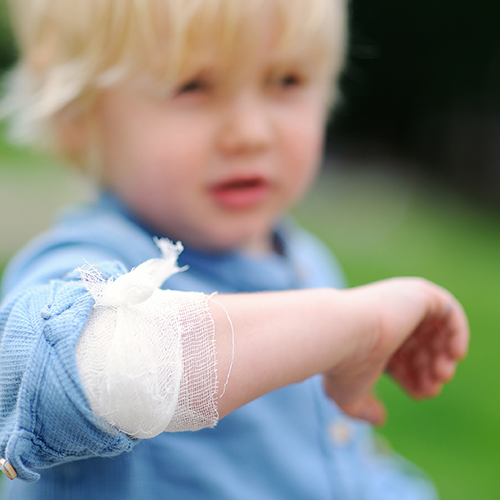26 September 2024
 Whether it’s a sore arm or a fear of injections, how a child is treated when they present with pain could significantly affect how they respond to and manage pain later in life.
Whether it’s a sore arm or a fear of injections, how a child is treated when they present with pain could significantly affect how they respond to and manage pain later in life.
In a new study from the University of South Australia, researchers say that parents and doctors should be mindful of how they talk to and treat children experiencing pain – no matter how big or small the injury – knowing that these foundational experiences can be carried forward into adulthood.
Drawing from diverse research across developmental psychology, child mental health, and pain sciences, researchers say that it may be important to validate children’s pain by demonstrating that their pain-related experiences, emotions, or behaviours are acceptable, understood, and legitimate.
By validating a child’s pain, the child feels heard and believed, which reinforces their trust and connection with their parent, or with a treating doctor.
UniSA researcher Dr Sarah Wallwork says social relationships play a critical role in shaping how health is experienced throughout the lifespan.
“When a parent or doctor validates a child’s experiences in a way that matches their expressed vulnerability, it helps the child to feel accepted, builds connection and trust, and may help the child to develop critical skills in regulating their emotions,” Dr Wallwork says.
“For example, when a doctor is attentive, and responds to a child’s emotional and behavioural cues, particularly about seeking help, the clinician is telling the child their pain is real and concurrently reinforcing helpful pain management behaviours, such as attending the clinic.
“However, if these cues are missed, or the doctor questions the validity of their pain, this can have negative consequences for the child. Not only can it affect the clinician-patient relationship and trust but it can also impact future attendance at appointments and adherence to a pain management plan.
“Pain and emotion are inextricably linked, with emotion dysregulation commonly co-occurring with chronic pain.
“By validating children’s experiences of pain, they are likely to hold fewer negatively biased memories of pain and be in better position to seek help in the future, when then need it.”
In Australia, as many as one in four children experience chronic pain. The economic burden of chronic pain in Australia is more than $139 billion, mostly through reduced quality of life and productivity losses.
Dr Wallwork says that setting children up for success should cover all aspects of life, including pain management.
“Our research highlights an underemphasised element of child and youth pain treatment, especially for children in minoritised groups, who are systematically undertreated for pain,” Dr Wallwork says.
“People with chronic pain often report that their pain-related experiences are met with disbelief or dismissal. This can have significant consequences, including poor mental health and reduced quality of life.
“Given the significant burden of chronic pain, and the clear intersection with the rising child mental health crisis, it’s important that we better manage pain earlier on, rather than waiting until it is too late.”
Dr Wallwork says this review provides a building block for future empirical research.
…………………………………………………………………………………………………………………………
Media contacts: Annabel Mansfield M: +61 479 182 489 E: Annabel.Mansfield@unisa.edu.au
Jack Trehearne E: Jack.Trehearne@unisa.edu.au
Researcher: Dr Sarah Wallwork E: Sarah.Wallwork@unisa.edu.au



